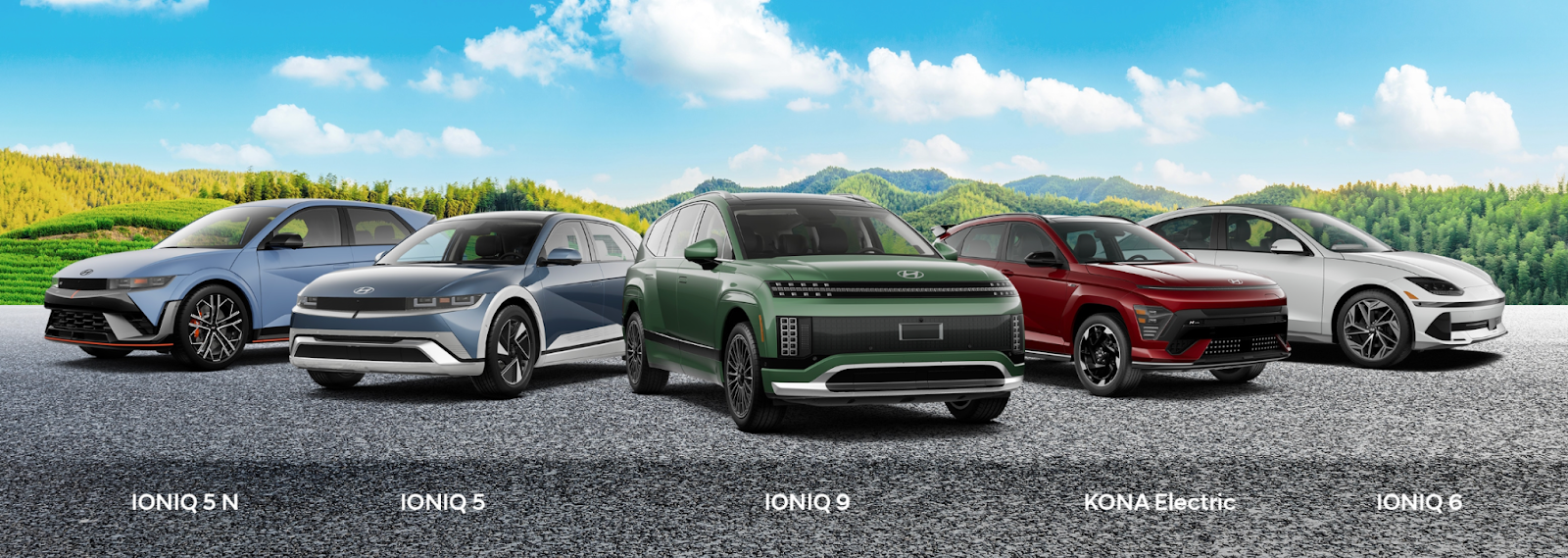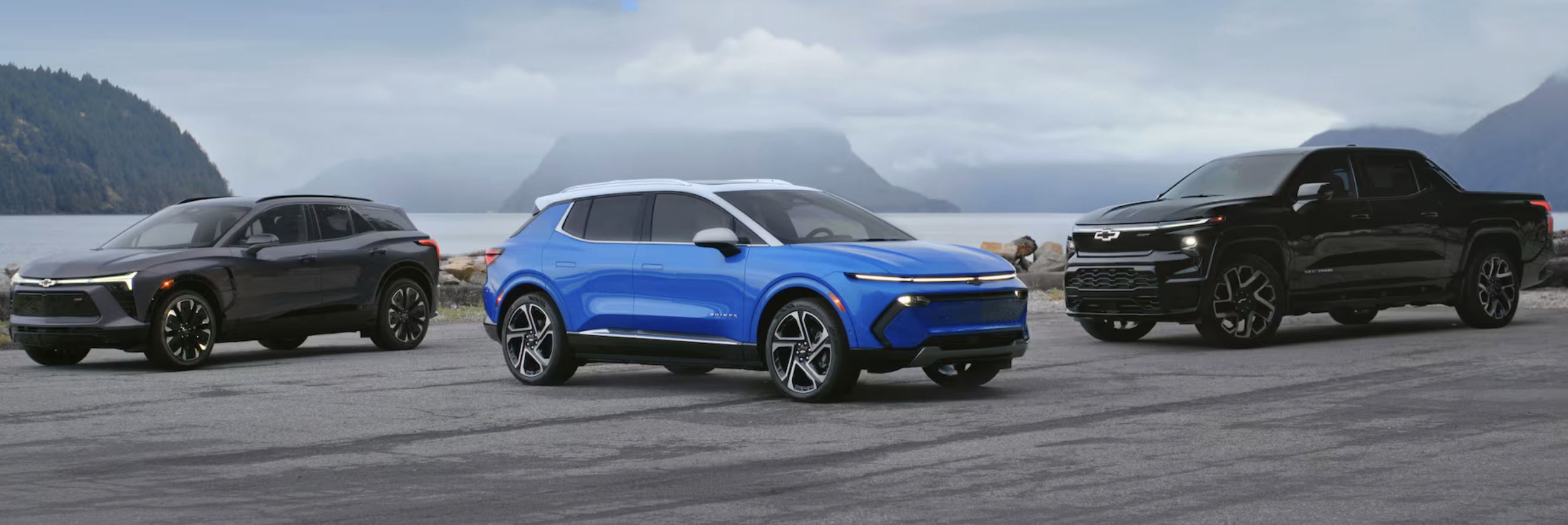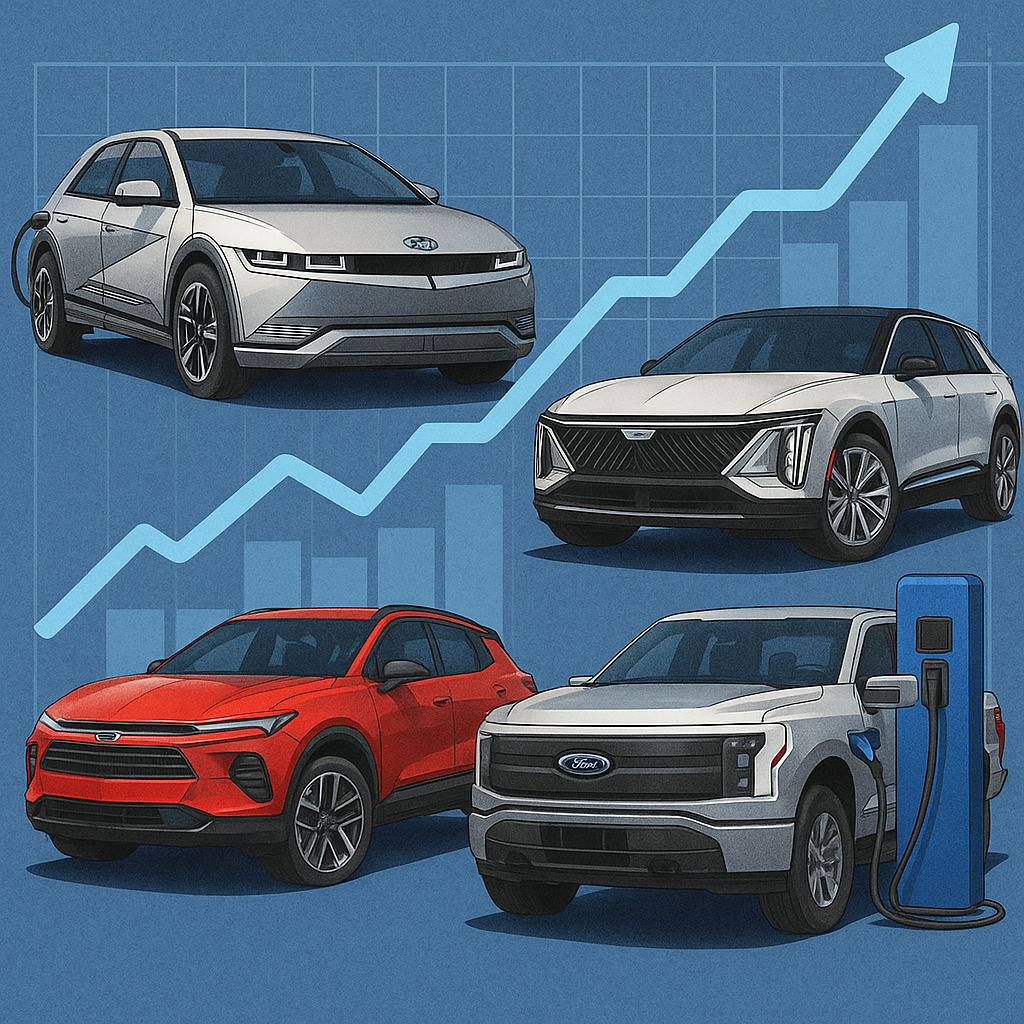Hyundai, Cadillac, and Ford bring distinct plays to that landscape, with each brand basing a strategy around design, branding, and scalable manufacturing. On the other hand, Chevrolet has seen success this year with affordable, well-appointed models, but is hesitant about its commitment to electrification.
Below, we explore how each company is setting itself up to compete sustainably when incentives fade.
Hyundai Group: Platform Excellence and Charging Speed

The past:
Hyundai is in a pretty good position at the expiration of the federal incentives. They sunk a ton of research and development into their e-GMP platform early in the decade, which helped design an electric-first platform shared by Kia and Genesis. This platform relies on tech specific to EVs: fast charge speed, V2L, and efficiency, even with body styles that resonate with American customers. This investment gives the group a real shot at endurance beyond incentives.
It’s worth noting that the Kona has had an electric option for almost a decade, so it’s not like Hyundai was designing from scratch. This entry-level model is still part of the lineup for budget minded customers who want practicality over specs.
The present:
Data from Recurrent shows how Hyundai EVs already outperform the 2025 average in DC fast charging (9.4 min vs. 16.7 min for +100 mi) and strong winter range retention (83.5 % vs. 79.5 %). Moreover, Hyundai’s embrace of EV centric features, such as being the first non-Tesla brand to release a model with native NACS charging, shows that they see electrification as a long term plan. They have also put their money where the charger is, so to speak, with a major investment in domestic manufacturing and building out American charging.
The Ioniq 5 remains their sales leader, and one of the few existing EVs that saw sales increase in the first half of 2025. Sales continued to rise in Q3, and despite an inevitable slowdown in Q4, it should keep the momentum going for years to come. The Ioniq 9, which debuted as a 2026 model, is well positioned to fill in a longstanding void in the 3-row EV segment. Families can cross shop the Ioniq 9 with its cousin, the EV9.
The future:
Hyundai recently announced its own future-looking plans: more energy dense batteries, cheaper battery packs, real-time battery performance data, and (somehow) even faster charging speeds. Although the brand has no brand new concepts on the horizon, these improvements will mean more affordability and trust. This plays into a long-standing Hyundai reputation: competitive pricing.
Although the brand’s EVs tend to have a different reputation than its gas cars, bringing down the price of the electric lineup will put them ahead of the competition. This will be a big factor as tariffs drive up purchase prices for new models across the board. Hyundai’s existing reputation for reliability, long warranties, and service network can help retain consumer confidence.
Cadillac: Reinvention Through Conquest and Luxury

The past:
Between 2015 and 2020, Cadillac’s U.S. sales stagnated and its brand skewed to older customers. Rivals such as BMW and Tesla were capturing younger luxury buyers with tech-forward designs. Cadillac’s efforts in this period—XT5 crossovers, CT sedans—kept the lights on but didn’t reset perceptions. There was no clear EV strategy beyond concept cars, and GM’s Ultium platform was still on the horizon. In short, Cadillac entered the 2020s as a storied but sleepy luxury nameplate, ripe for reinvention.
The present:
It’s no surprise that Cadillac shoppers may be less price sensitive than Hyundai’s. But still, Cadillac’s EV pivot has been among the most striking in legacy OEMs. Cadillac’s EV sales have grown 15–20 % in the first half of 2025, with 25 % of its sales electric, and 80 % of EV buyers new to the brand – and those numbers don’t include the successes of Q3.
Moreover, 15 % of new buyers come straight from Tesla. That kind of conquest rate matters in a subsidy‑free world because it proves Cadillac can win customers on perceived value, not just rebates.
Cadillac’s tact has been shifting from “luxury gasoline brand doing EVs” to “luxury brand doing it right.” The Lyriq, Escalade IQ, and Vistiq are helping recast Cadillac’s image for a younger demographic, lowering average buyer age in the process. Rather than relying on incentives to move cars, Cadillac is betting that luxury buyers will still weigh prestige, interior refinement, and polish.
The future:
Although Cadillac recently announced it would slow EV production in the first half of 2026, (along with some other GM models) scarcity can be a good look for luxury items.
If Cadillac can maintain margin, brand allure, and battery health reputation, it may weather the post‑incentive era more gracefully than many expect.
Ford: Scale, Affordability, and Electric Transformation

The past:
Ford’s initial EV forays included the Focus Electric and compliance plug-ins, and reception was as tepid as the designs. But in 2021–2022 the Mustang Mach-E changed that, giving Ford an EV that could compete directly with Tesla on style and performance. The launch of the F-150 Lightning in 2022 was even more consequential, proving that Ford could electrify its best-selling nameplate. However, lackluster returns on the F-150 EV had Ford reevaluate its strategy.
The present:
In 2025, Ford sells three EV models: Mach-E, F-150 Lightning, and E-Transit. The Mach-E has outsold the conventionally powered Mustang for many of the past 8 quarters, and the Lightning won Recurrent’s “Best Workhorse” award for 2025. However, Ford is still losing money on its current EV lineup. Its CEO, Chris Farley, is committed to an electric future and announced plans to localize production and cut costs, including investing in LFP battery lines and experimenting with “assembly tree” manufacturing to reduce complexity and parts count.
With the federal tax credit expiring, a long trail of subsidies that helped buoy Ford EVs is at its end. Taking advantage of the commercial credit, the company has bought out remaining inventory so that it can sell them through Q4 with the extra $7500 off.
The future:
Ford has committed $5 billion to its Universal EV Platform and a $2 billion upgrade to the Louisville Assembly Plant to produce a midsize electric pickup ($30,000 target) by 2027. Combined with domestic battery investments, Ford is positioning itself to build affordable EVs at scale, which is a critical step after subsidies vanish. Its home backup power feature for the F-150 Lightning also gives Ford a “value add” beyond driving that competitors can’t easily match. Plus, Ford leads in terms of brand loyalty. If the company can execute on cost and reliability, it could become the mainstream EV brand in a subsidy-free world.
Chevrolet: Commitment Will Determine Success

The past:
Chevrolet’s EV history is deeper than many realize. The Volt plug-in hybrid (2011–2019) was the first mass market plug-in hybrid in the US. The Bolt EV (2016 launch) was a pioneer in affordable, long range electrification. These two products alone gave GM a head start in mass-market electrification. But a highly publicized battery recall and the absence of a unified platform left Chevy’s EV story fragmented in the early 2020s.
The present:
In 2025, the well-priced and well-designed Equinox EV had emerged as a breakout hit, helping Chevrolet set all-time EV sales records. While the Mach-E had previously been the runner-up to Tesla sales, the Equinox upstaged it in the first half of the year. The Silverado EV is poised to carry Chevy’s truck legacy into the electric era, and Chevy has teased a refreshed, NACS-enabled Bolt EV to hit the market by 2027.
The future:
The future for Chevy is murky. Despite a promising lineup and strong sales, over 2025 GM has pulled back on its “all-EV by 2035” target and lobbied to end a lot of the policies that drove electric cars in the US. The brand’s vacillations are a direct response to the federal attitude towards EVs, but a failure to invest now may mean Chevy EVs fall behind.
To stay relevant, Chevrolet will need to depend less on bold proclamations and more on execution: cost control, battery and charging upgrades, and maintaining consumer confidence with appealing products.
What to Watch — and What Matters Next
- Margin pressure & cost control: Material costs, tariffs, and supply chain shocks will no longer be offset by subsidies. Volume, vertical integration, and scalable design will matter more than ever. Companies who are already set up to build domestically will be at the front of the race.
- Consumer confidence sans rebates: Brands that can sell on features + experience, rather than incentive sales, will outperform. This includes EV-first perks like V2L, heat pump technology, and fast charging speeds, as well as experiential touches like good software, integrations, and lovely interiors
- Used EV market strength: With a shaky economy on the horizon, more and more shoppers will turn to the highly competitive used EV market. Hyundai, GM, and Ford each need to cultivate a strong certified used EV business to capture buyers. As the lease returns start to roll in over 2026, shoppers will begin to focus on things like battery warranties and range predictions.
The end of federal incentives doesn’t mean the end of EV growth. It just means the narrative changes. Automakers who win will be those who can deliver real value without relying on rebates — expect to see Hyundai, Cadillac, and Ford making that possible.
Want more industry predictions and analysis? Sign up for EV Industry Intelligence.

-p-500.png)



